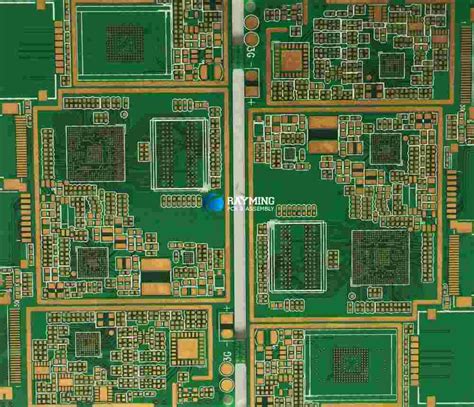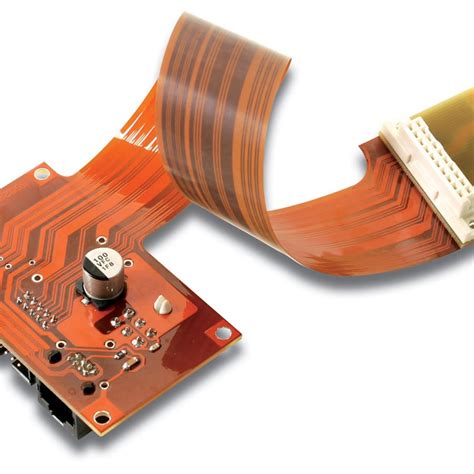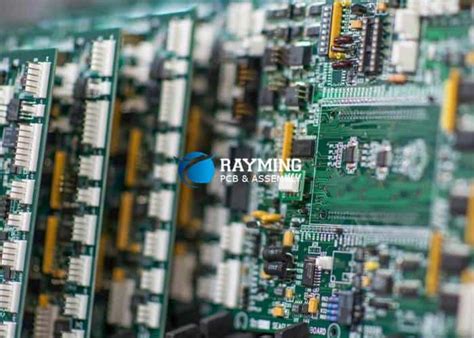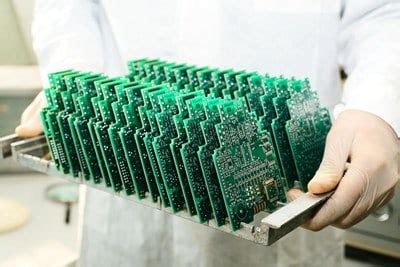Oem metal core pcb
Advantages Of Using OEM Metal Core PCBs In High-Power Applications
OEM metal core printed circuit boards (PCBs) have become increasingly popular in high-power applications due to their unique advantages. These specialized PCBs are designed with a metal core, typically aluminum or copper, which provides superior thermal management compared to traditional fiberglass-based PCBs.
This enhanced thermal conductivity is crucial in high-power applications where excessive heat generation can lead to performance degradation or even failure of electronic components. By efficiently dissipating heat, OEM metal core PCBs help maintain optimal operating temperatures, thereby extending the lifespan of the components and ensuring reliable performance.
In addition to thermal management, OEM metal core PCBs offer improved mechanical stability.
The metal core provides a robust foundation that can withstand mechanical stresses and vibrations, which are common in high-power environments. This increased durability is particularly beneficial in applications such as automotive, aerospace, and industrial machinery, where electronic systems are often exposed to harsh conditions. The enhanced structural integrity of metal core PCBs reduces the risk of damage and ensures consistent performance over time.
Furthermore, OEM metal core PCBs contribute to better electrical performance.
The metal core acts as a ground plane, which can help reduce electromagnetic interference (EMI) and improve signal integrity. This is especially important in high-power applications where maintaining signal quality is critical. By minimizing EMI, metal core PCBs help ensure accurate data transmission and reduce the likelihood of signal distortion, which can be detrimental to the overall functionality of the system.
Another significant advantage of using OEM metal core PCBs in high-power applications is their ability to support higher current densities.
The metal core allows for the use of thicker copper layers, which can handle higher currents without overheating. This capability is essential in applications such as power supplies, LED lighting, and motor drives, where high current flow is required. By accommodating higher current densities, metal core PCBs enable the design of more efficient and compact electronic systems.
Moreover, the use of OEM metal core PCBs can lead to cost savings in the long run.
Although the initial cost of metal core PCBs may be higher than that of traditional PCBs, their superior thermal management and durability can result in lower maintenance and replacement costs. The extended lifespan of components and reduced risk of failure translate to fewer downtimes and less frequent repairs, ultimately leading to cost savings for businesses.
In conclusion, the advantages of using OEM metal core PCBs in high-power applications are manifold.
Their superior thermal management capabilities, improved mechanical stability, enhanced electrical performance, and ability to support higher current densities make them an ideal choice for demanding environments. Additionally, the potential for long-term cost savings further underscores their value. As high-power applications continue to evolve and become more complex, the adoption of OEM metal core PCBs is likely to increase, driven by the need for reliable, efficient, and durable electronic solutions.

Design Considerations For OEM Metal Core PCBs
When designing OEM metal core printed circuit boards (PCBs), several critical considerations must be taken into account to ensure optimal performance and reliability. Metal core PCBs, often utilized in high-power applications due to their superior thermal management properties, require a meticulous approach to design that balances electrical performance, thermal efficiency, and mechanical stability.
One of the primary considerations in the design of metal core PCBs is the selection of the appropriate metal core material.
Aluminum and copper are the most commonly used materials, each offering distinct advantages. Aluminum cores are favored for their lightweight properties and cost-effectiveness, making them suitable for a wide range of applications. Conversely, copper cores provide superior thermal conductivity, which is essential for high-power applications where efficient heat dissipation is critical. The choice of core material directly impacts the thermal performance and overall cost of the PCB, necessitating a careful evaluation of the specific requirements of the application.
In addition to material selection, the thickness of the metal core plays a pivotal role in the thermal management capabilities of the PCB.
Thicker cores enhance heat dissipation but may introduce challenges in terms of mechanical flexibility and weight. Therefore, designers must strike a balance between thermal performance and the mechanical constraints of the end application. This balance is particularly crucial in applications such as LED lighting, automotive electronics, and power supplies, where both thermal management and mechanical robustness are paramount.
Another essential aspect of designing OEM metal core PCBs is the layout and placement of components.
The thermal conductivity of the metal core can be leveraged to dissipate heat away from high-power components, thereby preventing overheating and ensuring stable operation. Strategic placement of components, coupled with the use of thermal vias and heat sinks, can significantly enhance the thermal performance of the PCB. Moreover, the layout must also consider electrical performance, ensuring minimal signal interference and optimal power distribution.
The choice of dielectric material between the metal core and the copper circuitry is another critical factor.
The dielectric material must possess high thermal conductivity to facilitate efficient heat transfer while maintaining electrical insulation. Commonly used dielectric materials include thermally conductive pre-pregs and laminates, which offer a balance between thermal performance and electrical insulation. The thickness and thermal conductivity of the dielectric layer must be carefully selected to match the thermal and electrical requirements of the application.
Manufacturing considerations also play a significant role in the design of metal core PCBs.
The fabrication process for metal core PCBs differs from that of traditional PCBs, requiring specialized equipment and techniques. For instance, drilling and routing processes must account for the hardness and thermal properties of the metal core, which can impact the precision and quality of the final product. Additionally, the assembly process must ensure proper thermal management, with considerations for soldering temperatures and thermal cycling.
In conclusion, designing OEM metal core PCBs involves a comprehensive evaluation of material selection, core thickness, component layout, dielectric properties, and manufacturing processes. Each of these factors interplays to influence the thermal, electrical, and mechanical performance of the PCB. By carefully considering these design elements, engineers can develop metal core PCBs that meet the stringent demands of high-power applications, ensuring reliability and efficiency in their end-use environments.

Thermal Management Solutions With OEM Metal Core PCBs
Thermal management is a critical aspect of modern electronic design, particularly as devices become more compact and powerful. One of the most effective solutions for managing heat in electronic circuits is the use of OEM metal core printed circuit boards (PCBs). These specialized PCBs are designed to efficiently dissipate heat, thereby enhancing the performance and longevity of electronic components.
OEM metal core PCBs are constructed with a metal substrate, typically aluminum or copper, which serves as the core material.
This metal core is sandwiched between layers of dielectric material and copper circuitry. The primary advantage of using a metal core is its superior thermal conductivity compared to traditional fiberglass substrates. This enhanced thermal conductivity allows for more efficient heat transfer away from heat-generating components, such as power transistors, LEDs, and high-performance processors.
In addition to their thermal management capabilities, OEM metal core PCBs offer several other benefits.
For instance, they provide improved mechanical stability, which is particularly important in applications subject to mechanical stress or vibration. The metal core adds rigidity to the PCB, reducing the risk of damage during handling and operation. Furthermore, the use of a metal core can also contribute to electromagnetic interference (EMI) shielding, enhancing the overall electromagnetic compatibility (EMC) of the device.
The manufacturing process of OEM metal core PCBs involves several key steps.
Initially, the metal core is prepared and cleaned to ensure a smooth surface for subsequent layers. A dielectric layer is then applied to the metal core, followed by the copper circuitry. The copper layers are etched to create the desired circuit patterns, and additional layers may be added depending on the complexity of the design. Finally, the PCB is coated with a protective solder mask and undergoes rigorous testing to ensure it meets the required specifications.
The applications of OEM metal core PCBs are diverse and span various industries.
In the automotive sector, these PCBs are used in LED headlights, power converters, and motor controllers, where efficient heat dissipation is crucial for reliable operation. In the consumer electronics industry, metal core PCBs are found in high-power LED lighting, gaming consoles, and advanced computing devices. Additionally, they are employed in industrial applications such as power supplies, motor drives, and renewable energy systems, where thermal management is essential for maintaining performance and safety.
Despite their numerous advantages, OEM metal core PCBs also present certain challenges.
The higher thermal conductivity of the metal core can complicate the soldering process, requiring specialized techniques and equipment. Additionally, the cost of metal core PCBs is generally higher than that of traditional fiberglass PCBs, which may be a consideration for cost-sensitive projects. However, the long-term benefits of improved thermal management and enhanced reliability often outweigh these initial costs.
In conclusion, OEM metal core PCBs represent a highly effective solution for thermal management in electronic circuits. Their superior thermal conductivity, mechanical stability, and potential for EMI shielding make them an attractive choice for a wide range of applications. As electronic devices continue to evolve, the demand for efficient thermal management solutions will only increase, further solidifying the importance of OEM metal core PCBs in the industry.

Comparing OEM Metal Core PCBs To Traditional FR4 PCBs
When comparing OEM metal core PCBs to traditional FR4 PCBs, it is essential to understand the fundamental differences in their construction, performance, and applications. Metal core PCBs, often referred to as MCPCBs, are designed with a metal substrate, typically aluminum or copper, which serves as the core material. In contrast, traditional FR4 PCBs utilize a fiberglass-reinforced epoxy laminate as their core. This distinction in core materials significantly impacts the thermal management, mechanical properties, and overall performance of the PCBs.
One of the primary advantages of metal core PCBs is their superior thermal conductivity.
The metal substrate in MCPCBs allows for efficient heat dissipation, which is crucial in applications where high power and heat generation are prevalent. For instance, LED lighting systems, power supplies, and automotive electronics often employ MCPCBs to manage heat effectively and ensure reliable operation. In comparison, FR4 PCBs have lower thermal conductivity, which can lead to overheating issues in high-power applications. Consequently, the use of MCPCBs can enhance the longevity and performance of electronic components by maintaining optimal operating temperatures.
Moreover, the mechanical strength of metal core PCBs is another notable benefit.
The metal substrate provides a robust foundation, making MCPCBs more resistant to mechanical stress and deformation. This characteristic is particularly advantageous in environments subject to vibration, shock, or other physical stresses. On the other hand, FR4 PCBs, while offering adequate mechanical strength for many applications, may not withstand extreme conditions as effectively as their metal core counterparts. Therefore, in industries such as aerospace, automotive, and industrial electronics, where durability is paramount, MCPCBs are often the preferred choice.
In addition to thermal and mechanical advantages, metal core PCBs also exhibit improved electrical performance in certain scenarios.
The metal substrate can act as a ground plane, reducing electromagnetic interference (EMI) and enhancing signal integrity. This feature is beneficial in high-frequency applications where signal integrity is critical. Conversely, traditional FR4 PCBs may require additional design considerations, such as the incorporation of ground planes and shielding, to achieve similar levels of EMI reduction and signal integrity.
Despite these advantages, it is important to acknowledge that metal core PCBs are not without their limitations.
One significant drawback is the cost. The materials and manufacturing processes involved in producing MCPCBs are generally more expensive than those for FR4 PCBs. This cost difference can be a deciding factor for applications where budget constraints are a primary concern. Additionally, the weight of metal core PCBs can be a disadvantage in applications where lightweight designs are essential. In such cases, the lighter FR4 PCBs may be more suitable.
Furthermore, the design and fabrication processes for metal core PCBs can be more complex.
The presence of a metal substrate necessitates specialized techniques for drilling, routing, and layer stacking. These additional steps can increase production time and complexity, potentially leading to longer lead times compared to traditional FR4 PCBs. Therefore, when considering the use of MCPCBs, it is crucial to evaluate the specific requirements of the application and weigh the benefits against the potential challenges.
In conclusion, OEM metal core PCBs offer distinct advantages over traditional FR4 PCBs in terms of thermal management, mechanical strength, and electrical performance. However, these benefits come with trade-offs, including higher costs, increased weight, and more complex manufacturing processes. By carefully assessing the needs of the application and considering these factors, designers and engineers can make informed decisions about whether metal core or FR4 PCBs are the most appropriate choice for their specific requirements.





